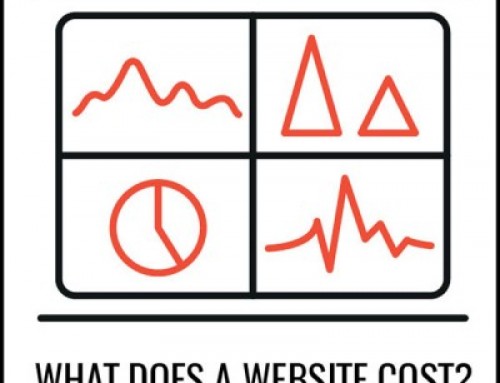It is easy to talk about the activities you do and forget the value you deliver.
Is the value of your work obvious, or are you a commodity? Do you find yourself wishing that people really understood what you have to offer? After all, their life would be so much better if they would just let you help! Wish they knew.
I have worked with hundreds of businesses and public sector clients, and it’s very common to hear the complaint: people don’t understand what we do.
It’s hard to imagine anything more spirit-killing than the conviction that our work is unnoticed, undervalued, or unused. Yet we encounter those thoughts all the time, perhaps even within ourselves. In the public sector, the result is that listless feeling that you aren’t really able to make a positive difference. People don’t interact with you because it helps them, but because you are an obstacle they have to get around.
In business the symptoms of this sad conviction are similar, but may be felt even more acutely. A lousy connection to your customers will have huge financial implications for your business. If you don’t fix that disconnect, you will not survive.
So things have to change. How are you going to do that? Just functioning is a handful, and now we have to change what is going on in the minds of strangers? How hard is that?
Actually, changing what goes on in other people’s head is impossible, well, almost impossible. The key is to change what is going on in our minds first, and suddenly your connection to your audience will take on a new and positive quality.
Here’s how to make your value completely obvious:
Give up this one expectation
Our expectation that the client needs to understand and value our work before we can help them is backwards thinking. You will not convince your audience to act by explaining the details of what you do. As consulting guru David Baker notes, chances are that your audience are not familiar with your industry, haven’t studied your subject, haven’t worked in your field. They might consider your work something magical, or they might consider it a necessary evil, but they don’t really know how or what it is that you do. If you are indeed an expert and know how to do all your technical wizardry or produce the right mechanical part, that’s great for them and for you. But I don’t care how my transmission works – I just want to drive.
Pointblank – the general public won’t ever fully understand the intricacies of your work, and if that is your goal, it is not worth the effort.
A new approach
So to renew our communication strategy we need to stop focusing on our own story. That’s a closed loop. We need to connect to the reality that your client understands, and what they understand is their pain, and to some extent, their needs. Of course, a common problem for all people in pain is to misdiagnose the cause or the solution. But they definitely understand the pain. Our job as experts is to recognize the experience of our client, and to demonstrate our understanding before asking for theirs. How do we demonstrate that understanding?
If there is one thing that I want to help you actualize, it’s this: don’t just talk at them, walk with them. We need to move alongside clients in conversation, rather than running over them with sales patter or blathering on about our grand strategy.
Walking alongside someone changes everything about our conversation. We aren’t opposing forces acting on each other. As we stroll along, we’re partners. Try it. And I’ll bet that when you identify people who changed your life for the better, they walked with you through some important part of your life, and the impact they had on you was in conversation.
How did they do it?
Three keys to showing value through conversation
Three characteristics of conversation that changes our life are shared treasure, shared vision, and connection.
- To share a treasure is to understand the important things your audience wants to defend and keep, and ensuring that you honor those. Those important things might be people close to them, their money, health, independence, freedom, maybe the safety of their employees or the dignity of other people. Does your business or organization help defend one of those treasures? Show your audience that it does. How much safer this mode of conversation feels to your listener than aggressive marketing which is all about breaking down defenses. No one enjoys being assaulted. Don’t aim to defeat their defenses – show that you understand what they treasure.
- Shared Vision is engaging your audience with a picture of their future, empowered by the benefits your service delivers. In your work, you’ve seen what happens when you are allowed to do your best for the people you serve. That positive outcome is actually what you’re offering. Of course there are technical reasons why your service is effective, but that is not what they care about. We can talk about process, but only after we have defined the desired outcomes.
- Real connection means you give value in all you do, and develop relationships for that purpose. In short, you need to care about giving your client the best result. This is very different from marketing that aims merely to extract money and move on. Consciously focus on what it is needed to have your client celebrating at the end. How do you picture that project file as completed? Is it their name crossed off a to-do list, as if they were a problem to solve? Or is it as another name to add to your own hall of fame, as a person who will now be more effective or happy because what you have done for them?
These are not slogans, but are the lifeblood of any business or organization that effects positive change in the real world.
Your message is actually a clarification – for you
Here’s the mind-blowing reality – working on your message with this value-centered focus will make a positive difference, but the biggest transformation will be in your own thinking. I’ve seen it too many times to count.
In conversation with our clients at Alphabet, we point out that we can only build a solid communications piece or website by clarifying out loud the true value of what you, our clients, are offering.
But getting to that moment of clarity is often difficult. The conversation often slides back into a discussion about sales process, product specs or technical requirements. We have to push the focus back to the end user’s point of view, repeatedly.
But somewhere in the process, things change, and something wonderful happens.
One moment we live for
What we live for is that moment when we find the language and images that communicate the real value you deliver. Sometimes that moment is quite electric – we’ve had clients turn to us – eyes wide – and as pride and vision for the value of their own work is re-kindled, they’ve burst out – that’s it! that’s it!
When I share that moment with you as my client, I know that you feel understood. And because we have done that important work of clarifying the true value of your work, your message is going to reach the people who need to know just how much you have to offer.
Want to feel good? Get in touch with the value of your work, and give its full benefit to the people you serve. They will never forget, and – I’m happy to say – neither will you.

Tim Anderson is the principal of Alphabet Communications




